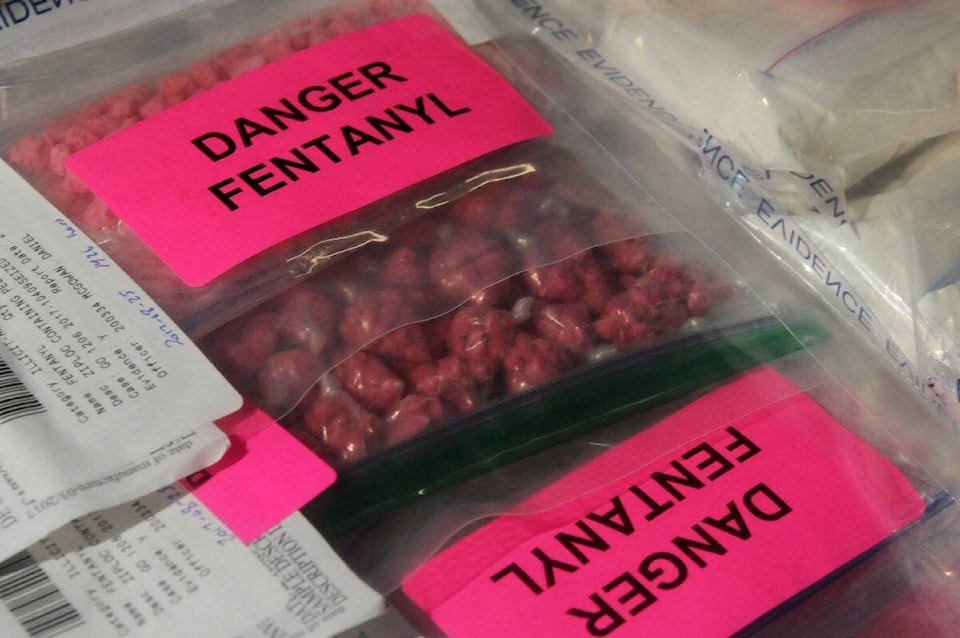Deaths from unregulated drugs in B.C. appear to know no geographic boundaries, according to recent figures from the BC Coroners Service.
According to figures released by Chief Coroner Lisa Lapointe Wednesday (Jan. 24), unregulated drugs claimed at least 2,511 people in 2023 in setting a new record based on a decade’s worth of data.
In terms of absolute numbers, Vancouver accounted for 644 deaths, followed by Surrey with 231 and Greater Victoria with 168. But a closer look reveals that the problem of unregulated death has spread beyond the major population centres into every corner of the province.
Vancouver as a health delivery service area recorded almost 87 deaths per 100,000 people, just ahead of the Northern Interior region with almost 81 deaths per 100,000 and Central Vancouver Island with almost 67 deaths per 100,000.
Digging down to the local health area, it comes as no surprise that Vancouver Centre-North, home to Vancouver’s Downtown Eastside neighbourhood, recorded the highest numbers of death per 100,000 with almost 553. Vancouver’s Downtown Eastside is among the poorest postal codes in all of Canada with a host of social issues including homelessness, crime, prostitution and the larger legacies of colonialism.
The connection between unregulated drug deaths and wealth becomes even more apparent when looking at the health care area that includes the wealthy Vancouver neighbourhoods of Point Grey and Kitsilano. That area recorded less than 5 unregulated drugs deaths per 100,000.
But these figures should not lead to the conclusion that deaths from unregulated drugs is an urban problem, contained to urban cores. Surrey, a suburban community in Metro Vancouver with a population exceeding 500,000 has 38 deaths per 100,000, on par with parts of Vancouver.
The per-capita picture gets even darker outside the provincial population centres as several small communities in rural corners of the province with a long history of resource extraction but currently going through economic transitions saw death rates close to or in excess of 100 per 100,000.
RELATED: 2023 was the worst year for fatal toxic drug poisonings in B.C. history
They include Hope with almost 124 deaths per 100,000, Alberni/Clayoquot Sound with almost 103, Greater Campbell River with almost 94 deaths per 100,000, Terrace with almost 94 per 100,000 and Kitimat with 92 deaths per 100,000.
Growing communities in other areas outside of Metro Vancouver and Greater Victoria are also not immune. Consider Vernon in the North Okanagan. In 2016, Vernon’s LHA recorded 20 unregulated drug deaths per 100,000. By 2023, that number had risen to almost 70 per 100,000. Penticton’s LHA saw a comparable rise from 16.2 per 100,000 in 2016 to 49 per 100,000 in 2023. The Central Okanagan also saw a rise, from 26.5 in 2016 to almost 47 in 2023.
It is important to point out out that figures can vary significantly from year to year, depending on the size of the community. Consider Kimberley. Three deaths in 2016 gave that community 31.4 deaths per 100,000, only for the rate to drop to zero in three out of the next four years. In fact, Kimberley did not record a single unregulated drug death in 2022 and 2023.
This said, the overall numbers for the province are clearly pointing upwards.
The sociology of unregulated drug deaths in B.C. is also telling. Men accounted for almost eight out of 10 deaths in 2023, a rate which has more or less remained steady for the past decade with some variation up or down. Figures also show a relationship with age. Individuals aged between 30 and 39 accounted for the largest share of deaths with 632 or 25 per cent, closely followed by individuals aged 50 to 59 and individuals aged 40 to 49.
The smallest number of deaths occurred among individuals aged 0 to 18 with 27, followed by individuals aged 7o to 79 with 41. Another four deaths could not be classified.
Nearly half of all deaths (47.1 per cent) took place in private residences and fentanyl was the relevant drug causing death in nearly 86 per cent of all deaths.
